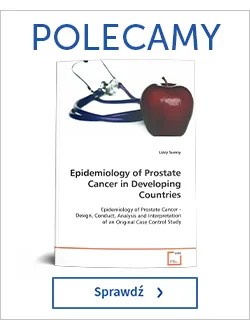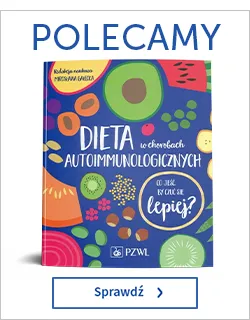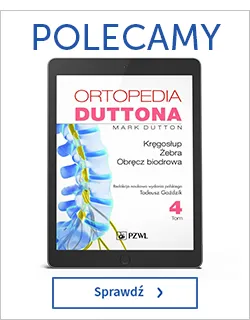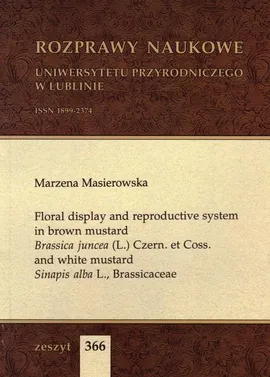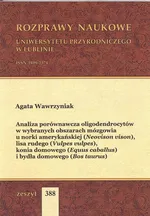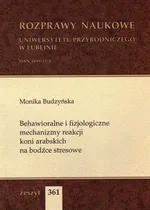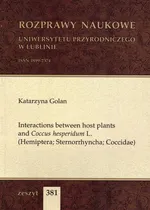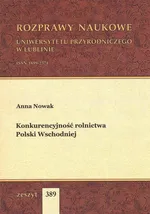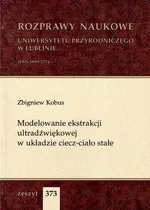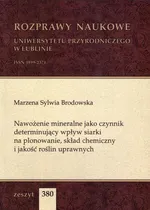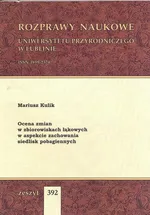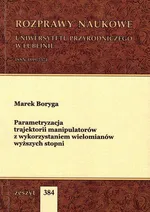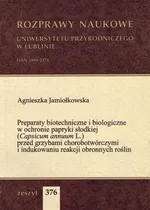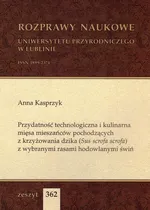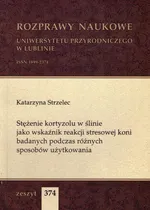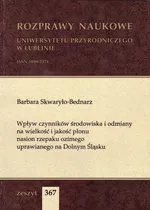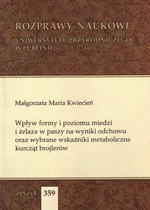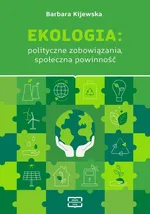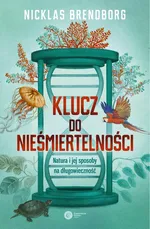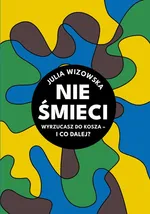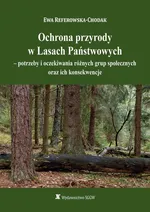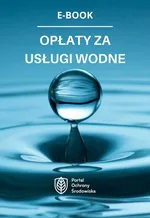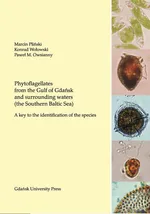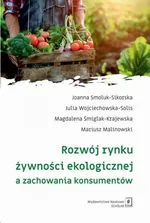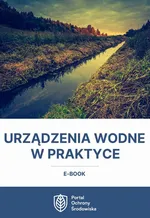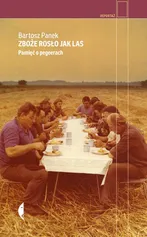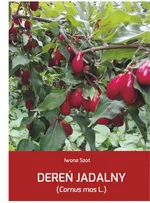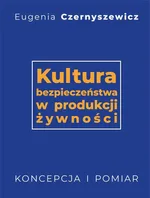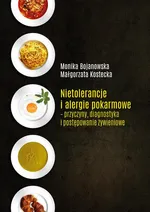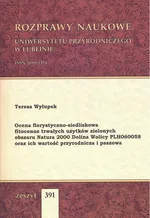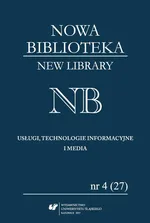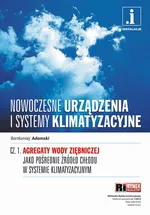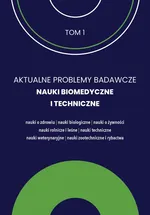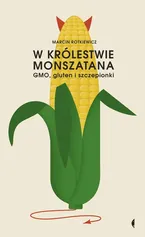- Kategorie:
- Język wydania: ??angielski_pl_PL??
- ISSN: 1899-2374
- Liczba stron: 124
-
Sposób dostarczenia produktu elektronicznegoProdukty elektroniczne takie jak Ebooki czy Audiobooki są udostępniane online po uprzednim opłaceniu (PayU, BLIK) na stronie Twoje konto > Biblioteka.Pliki można pobrać zazwyczaj w ciągu kilku-kilkunastu minut po uzyskaniu poprawnej autoryzacji płatności, choć w przypadku niektórych publikacji elektronicznych czas oczekiwania może być nieco dłuższy.Sprzedaż terytorialna towarów elektronicznych jest regulowana wyłącznie ograniczeniami terytorialnymi licencji konkretnych produktów.
-
Ważne informacje techniczne
-
Minimalne wymagania sprzętowe:
- procesor: architektura x86 1GHz lub odpowiedniki w pozostałych architekturach
- Pamięć operacyjna: 512MB
- Monitor i karta graficzna: zgodny ze standardem XGA, minimalna rozdzielczość 1024x768 16bit
- Dysk twardy: dowolny obsługujący system operacyjny z minimalnie 100MB wolnego miejsca
- Mysz lub inny manipulator + klawiatura
- Karta sieciowa/modem: umożliwiająca dostęp do sieci Internet z prędkością 512kb/s
-
Minimalne wymagania oprogramowania:
- System Operacyjny: System MS Windows 95 i wyżej, Linux z X.ORG, MacOS 9 lub wyżej, najnowsze systemy mobilne: Android, iPhone, SymbianOS, Windows Mobile
- Przeglądarka internetowa: Internet Explorer 7 lub wyżej, Opera 9 i wyżej, FireFox 2 i wyżej, Chrome 1.0 i wyżej, Safari 5
- Przeglądarka z obsługą ciasteczek i włączoną obsługą JavaScript
- Zalecany plugin Flash Player w wersji 10.0 lub wyżej.
-
Informacja o formatach plików:
- PDF - format polecany do czytania na laptopach oraz komputerach stacjonarnych.
- EPUB - format pliku, który umożliwia czytanie książek elektronicznych na urządzeniach z mniejszymi ekranami (np. e-czytnik lub smartfon), dając możliwość dopasowania tekstu do wielkości urządzenia i preferencji użytkownika.
- MOBI - format zapisu firmy Mobipocket, który można pobrać na dowolne urządzenie elektroniczne (np.e-czytnik Kindle) z zainstalowanym programem (np. MobiPocket Reader) pozwalającym czytać pliki MOBI.
- Audiobooki w formacie MP3 - format pliku, przeznaczony do odsłuchu nagrań audio.
-
Rodzaje zabezpieczeń plików:
- Watermark - (znak wodny) to zaszyfrowana informacja o użytkowniku, który zakupił produkt. Dzięki temu łatwo jest zidentyfikować użytkownika, który rozpowszechnił produkt w sposób niezgodny z prawem.
- Brak zabezpieczenia - część oferowanych w naszym sklepie plików nie posiada zabezpieczeń. Zazwyczaj tego typu pliki można pobierać ograniczoną ilość razy, określaną przez dostawcę publikacji elektronicznych. W przypadku zbyt dużej ilości pobrań plików na stronie WWW pojawia się stosowny komunikat.
Floral display and reproductive system in brown mustard Brassica juncea (L.) Czern. et Coss. and white mustard Sinapis alba L., Brassicaceae
(ePrasa)-
Druk: Lublin, 2012
-
Wydanie/Copyright: wyd. 366
-
Seria / cykl: Rozprawy Naukowe Uniwersytetu Przyrodniczego w Lublinie
-
Autor: Marzena Masierowska
-
Wydawca: Uniwersytet Przyrodniczy w Lublinie
-
Formaty:
PDF (Watermark)WatermarkZnak wodny czyli Watermark to zaszyfrowana informacja o użytkowniku, który zakupił produkt. Dzięki temu łatwo jest zidentyfikować użytkownika, który rozpowszechnił produkt w sposób niezgodny z prawem. Ten rodzaj zabezpieczenia jest zdecydowanie najbardziej przyjazny dla użytkownika, ponieważ aby otworzyć książkę zabezpieczoną Watermarkiem nie jest potrzebne konto Adobe ID oraz autoryzacja urządzenia.
Floral display and reproductive system in brown mustard Brassica juncea (L.) Czern. et Coss. and white mustard Sinapis alba L., Brassicaceae
The reproductive success of entomophilous species depends on the floral attractivity and mating system of plants, and the performance of pollinators. Owing to the substancial declie in the number of honey bees, the significance of wild insects as pollen vectors is growing. Lack of the comparative studies on ecological specialization of the floral display in cultivated mustards and effectiveness of their managed and wild pollinators as well as the discrepancies in data on the levels of allogamy and strength of SI system reveal a need of comprehensive studies on the reproductive system in these crop plants. This study aims to investigate: 1) floral and inflorescence characteristics significant to the reproductive system of mustards, 2) the relation of an inflorescence structure to floral display, and to fruit and seed set, 3) the mating system, 4) the pollination performance of managed and wild flower visitors and 5) the flow value of investigated crops for insects.
The studies were conducted on Brassica juncea ‘Małopolska’ and Sinapis alba ‘Borowska’. The flowering phenology, floral display and structure of synflorescence, P/O ratio were studied at both the flower and the individual level. Stigma receptivity was verified by two enzymatic tests and in vivo by artificial cross-pollination. To determine the SI strength and the mating system controlled pollination treatments were carried out. Field experiments using cages were performed to evaluate the role of insects in mustard pollination. Pollinator performance was assessed in terms of their relative abundance and density, flower constancy as well as pollen transfer and deposition. Moreover, chemical composition of nectar was studied using the HPAEC-PAD technique and the histidine scale. The pollen mass available to insects was determined by the modified ether method.
The pattern of flowering of studied cultivars shows a positively skewed distribution with a tendency towards a more symmetrical curve, leading to stable pollinator services throughout the whole flowering period. The flower display size depended on the cultivar and year, and fluctuated during a flowering season. Peak flower opening on the plant started in the 2nd week of the blooming period and continued for 2 weeks. During this period up to 86 and 91.5% of the total flowers opened on the cultivar ‘Borowska’ and cultivar ‘Małopolska’ plants, respectively, with the daily portion up to 6.1 and 8.6%. Mustard flowers are arranged in polytelic synflorescences, with racemes as the basic flowering units (florescences). Racemes are organized at main axis (MF), lateral axes and paracladia (Pc). Among-florescence and among-axis variation in abundance of flowering, fruit set and seed set was elucidated. The flower number/florescence as well as the fruit set and seed number/fruit decreased with increasing ramification order and for axes developing at the bottom of a synflorescence. In both mustards, the majority of flowers and subsequently fruits on the plant were produced by the MF and florescences on Pc of 1st and 2nd order. Mustard flowers exhibit incomplete protogyny. The P/Os values show that both cultivars are facultative in their reproductive systems. Results of pollination treatments reveal that cultivar ‘Małopolska’ has a high level of SC and facultative autogamy, whereas ‘Borowska’ is facultative xenogamous with partially effective SI (PSC). In cultivar ‘Borowska’ both the fruit set and seed number/flower decreased considerably after geitonogamous pollination, whereas in ‘Małopolska’ a lower mass of selfed seeds compare to that of outcrossed seeds was stated. The fruit set was highly correlated with both the seed number/flower and seed number/fruit. In cultivar ‘Borowska’ fruit set showed a positive correlation with seed weight, indicating that pollination treatments that produced numerous fruits also formed heavier seeds. The absence of insects decreased the total number of fruits set on a plant (~1.5×) and seed number/fruit (up to 1.7×) in both cultivars. Isolation from insects also decreased the fruit set by 10.7% in cultivar ‘Borowska’. The key pollinators were honey bees and solitary bees from the families Andrenidae, Halictidae and Megachilidae. Although honey bees did not differ significantly in their ability to deposit pollen grains on stigmas when compared with other bees, they exhibited higher levels of floral constancy and visited mustard flowers with higher intensity. In B. juncea ‘Małopolska’ solitary bees were equally efficient pollinators in terms of their daily activity pattern and flower constancy. The pattern of daily activity of flower visitors was associated primarily with the opening of new flowers and well correlated with floral rewards availability. Nectar of both cultivars is hexose-dominant with maltose, trehalose, erlose and sorbitol content. The pattern of AA content in nectar was age-dependent. Mustard flowers offered substantial amounts of pollen for visiting insects. Estimated pollen yield per unit area ranged from 48 to 85 kg·ha-1.
The main factors determining the distribution and size of flower display in mustards, are the structure of synflorescence and envintonmental conditions. A mixed mating system appears to occur in both investigated mustards and the weakening of SI system in S. alba is proved. Mustards are adapted to pollination by short-tongued bees and flies, but as cultivated crops they have been ‘infested’ by honey bees. The alternate pollinators are wild solitary bees. They have the potential to replace services provided by honey bees if multi-directional practices increase their population sizes to levels resulting in the flower visitation rates as high as A. mellifera. The obtained results are of practical importance when applied in the breeding and cultivation protocols for mustards. They can also be used in apiculture.
1. INTRODUCTION 7 2. MATERIALS AND METHODS 23 2.1. Plant material and site 23 2.2. Weather conditions 24 2.3. Flowering phenology and abundance 27 2.4. The reproductive system 29 2.5. Observations of insect visits 32 2.6. Effectiveness of various insect groups as pollinators 32 2.7. Assessment of the value of cultivars as nectar and pollen sources for insects 34 2.8. Data analysis 34 3. RESULTS 36 3.1. Flowering pattern and length of blooming 36 3.2. Structure of synflorescence 43 3.3. Flowering abundance 46 3.4. Stigma receptivity 49 3.5. Pollen and ovule production 53 3.6. Pollination experiments 53 3.7. Fruit and seed set in the florescences and synflorescence axes 62 3.8. Insect abundance and patterns of visits 67 3.9. Pollen transfer efficiency 71 3.9.1. Pollen deposition on stigma 71 3.9.2. Insect pollen loads 74 3.10. Nectar composition and pollen flow from mustards flowers 79 4. DISCUSSION 83 5. CONCLUSIONS 100 SUMMARY 102 STRESZCZENIE 104 REFERENCES 107
-
Inne z serii
-
Inne z kategorii
-
Inne wydawcy




